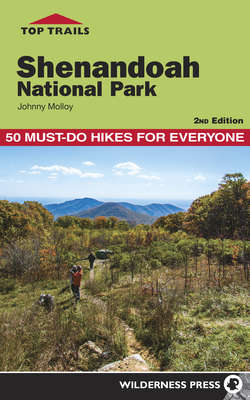Читать книгу Top Trails: Shenandoah National Park - Johnny Molloy - Страница 19
На сайте Литреса книга снята с продажи.
Weather and Seasons
ОглавлениеEach of the four distinct seasons lays its hands on Shenandoah National Park, though elevation always factors into park weather patterns. While each season brings exciting changes in the flora and fauna, the changes can occur seemingly day to day rather than month to month.
Be prepared for a wide range of temperatures and conditions regardless of the season. As a rule of thumb, the temperature decreases about 3 degrees for every 1,000 feet of elevation gained. The approximately 50 inches of yearly precipitation on the Blue Ridge is about 15 inches more than the nearby Shenandoah Valley receives. This precipitation is evenly distributed throughout the year, though it arrives with slow-moving frontal systems in winter and with thunderstorms in summer.
The table below lists temperatures at Luray, Virginia, in the Shenandoah Valley just west of the park. Expect temperatures in the higher park elevations to be 10 degrees cooler.
Spring is the most variable season. During March, the first signs of rebirth appear in the lowlands, yet trees in the high country may not fully leaf out until June. Visitors can experience both winter- and summerlike weather in spring. As summer approaches, the strong fronts weaken, and thunderstorms and haze become more frequent. Summertime rainy days can be cool. In fall, continental fronts once again sweep through, clearing the air and bringing warm days and cool nights, though rain is always possible.
The first snows of winter usually arrive in November, and snow can intermittently fall through April, though no permanent snowpack exists. About 40–120 inches of snow can fall during this time. Expect to incur entire days of below-freezing weather, though temperatures can range from mild to bitterly cold, often depending on the elevation.
